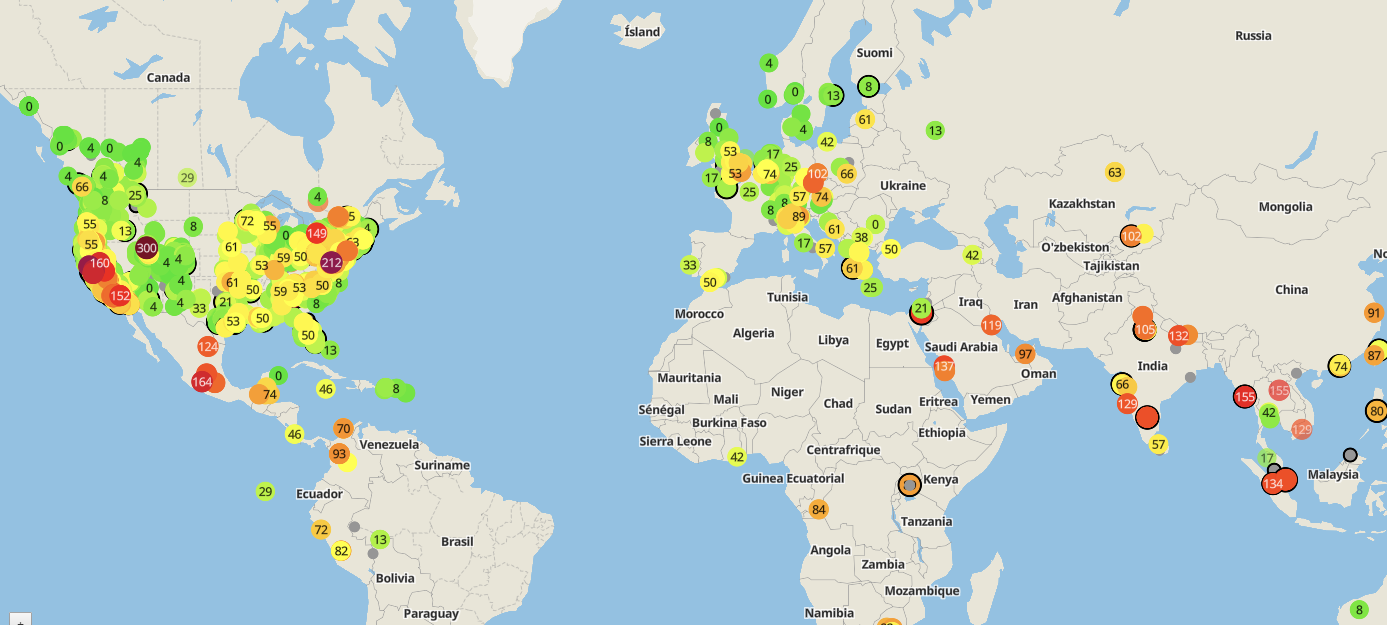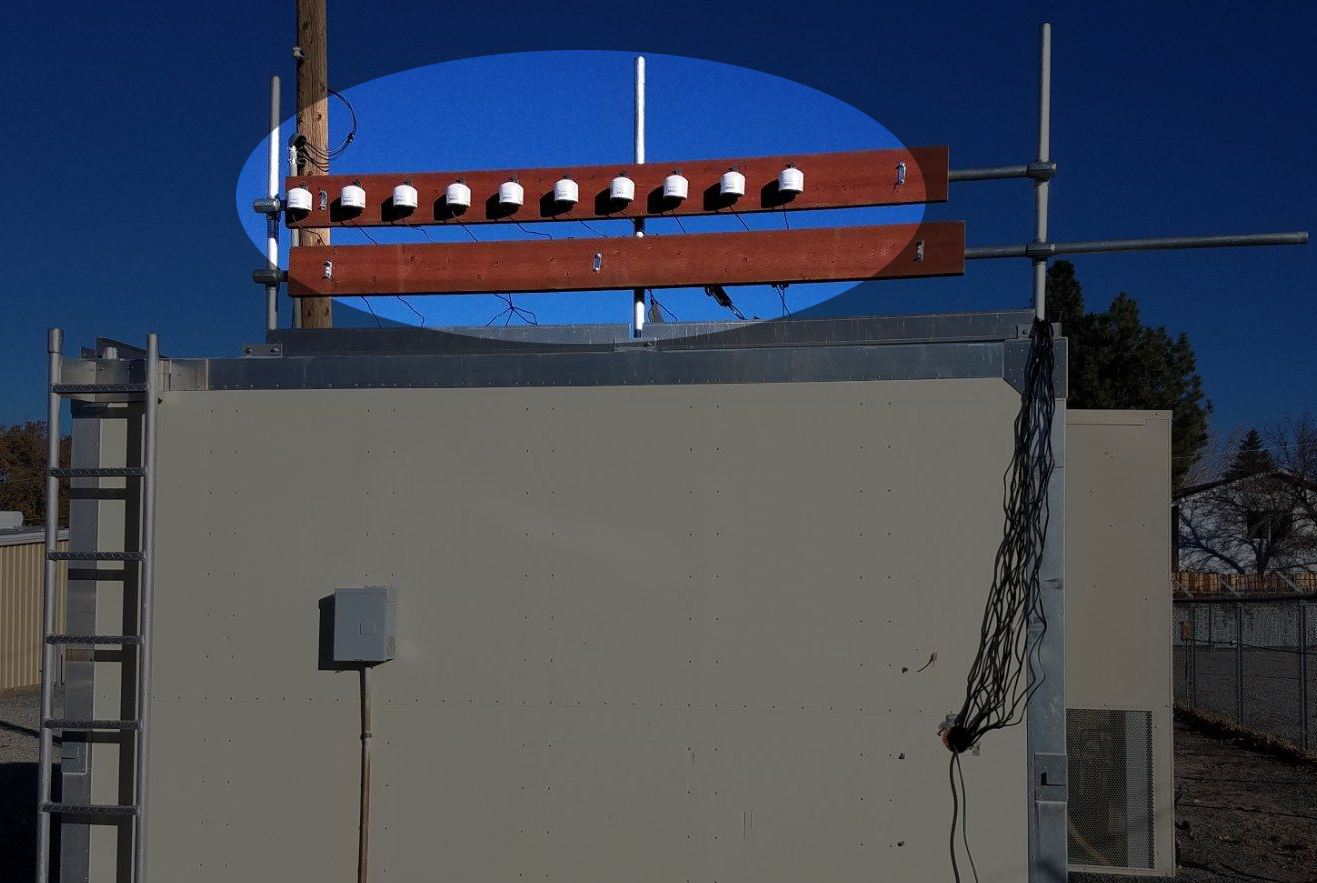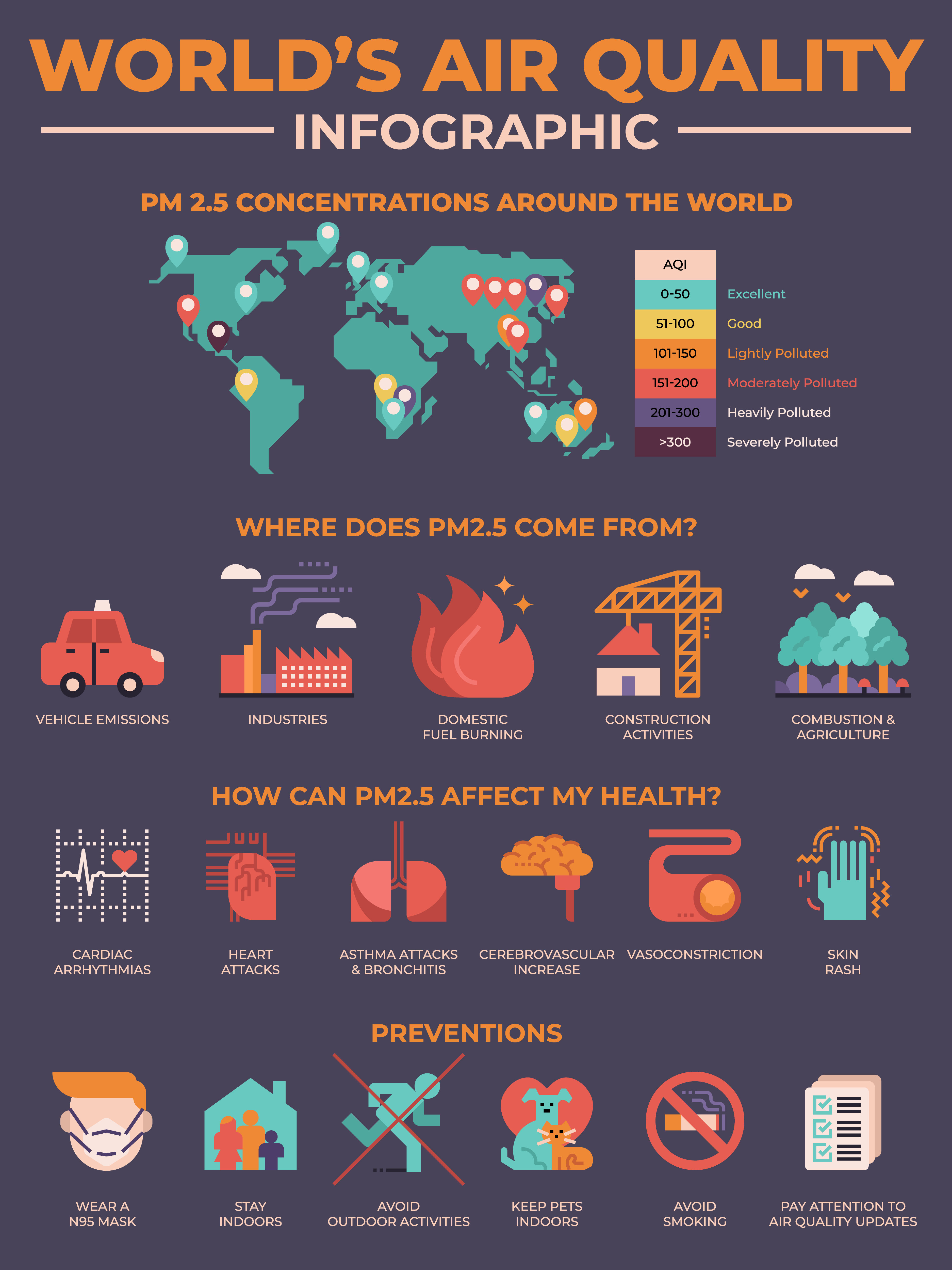Day 5: Air Quality Around the World - Air Quality Awareness Week 2019

Weather, topography, population, industry emissions, and natural events like wildfires all influence the quality of our air. It fluctuates from place to place around the world due to different environmental circumstances. In a word, air quality changes — and it changes all the time.
Most often, government agencies like the Nevada Division of Environmental Protection (NDEP) use networks of bulky, pricey sensors to measure even tiny changes in pollution concentrations (See Day 3: Air Quality Index and Sensors). But — like the smartphones in our pockets — even air quality sensors are getting smaller and cheaper.
Here at NDEP, we embrace the revolution of portable air sensors. We believe that directly engaging Nevadans through community-based science is key to monitoring and protecting our air.
Enter Portable Air Sensors
Portable air sensors are a low-cost alternative to more expensive official sensors used by government agencies. Thanks to portable sensors, air quality can be measured in real time by anyone across the U.S. — even beyond. Portable air sensors are revolutionizing how we monitor the quality of our air. Accessible sensors empower the public to monitor entire communities with a spatial and temporal resolution that goes way beyond what federal, state, and local agencies can do.

Here at NDEP, we embrace the revolution of portable air sensors. We believe that directly engaging Nevadans through community-based science is key to monitoring and protecting our air.

But there’s a catch…
Despite their small size and convenience, portable sensors simply aren’t as accurate as NDEP’s large, official sensors. Every official sensor in Nevada is certified by the U.S. Environmental Protection Agency (EPA). As a result, we can be confident in the accuracy of the data they provide. Portable sensors, on the other hand, lack the same level of accuracy and precision. In some cases, data from portable sensors can be three times higher or lower than actual pollutant concentrations.
Sounds pretty wacky, right?
But even with all the obstacles, portable air sensors still give us insight into air quality on a street by street basis.
What can I do? How do I use a portable sensor?
Our team at NDEP, the EPA, and other public agencies are currently working to better understand how to use portable sensors.
In the meantime, here are a few suggestions and tips to keep in mind when using a portable air sensor:
- Be mindful of the weather. Portable sensors are influenced by temperature and relative humidity. A large change in your air quality reading may have more to do with an incoming thunderstorm than actual pollution concentrations. Keep track of weather conditions and pollutant concentrations to verify the presence of biases or measurement errors.
- Get a backup. If possible, always use two or more sensors in the same location. This may provide hints on their reliability.
- Compare your monitor. Try to compare the hourly measurements of your sensor with a nearby state, federal, or local official air quality monitor.
- Observe the area. Are there walls, high buildings, or trees that could block the free flow of air? This might make the air stagnate, inflate pollution concentrations, and block your sensor from measuring pollutants. Is your sensor near a BBQ or fireplace? If possible, mount the sensor in a shady spot out of direct sunlight. Keep it away from vents or other local sources of pollution — even that delicious hickory smoke from your BBQ grill!
- Watch for seasonal changes. Expose your sensor to air pollution in every season: to wildfires in the summer; in fall and winter when your community uses woodstoves; in spring with its relatively “clean” air. When doing this, ask yourself if your sensor is responding as you would expect it to.
- Build a community of clean air enthusiasts. Share your experiences with other users to compare readings and observations.
Learn more:
- EPA Air Sensors Toolbox
- Air Quality Sensor Performance Evaluation Center
- Our World in Data – Air Pollution
Thanks for following us this week!
As Air Quality Awareness Week 2019 comes to an end, we want to remind you that air quality changes on an hourly basis. It’s always important to protect your health by “Checking the AQI & Getting Outside!” If you have additional questions, please contact our air quality team at NDEP.
 |
Our mission is to preserve and enhance the environment of the State in order to protect public health, sustain healthy ecosystems, and contribute to a vibrant economy.
|

